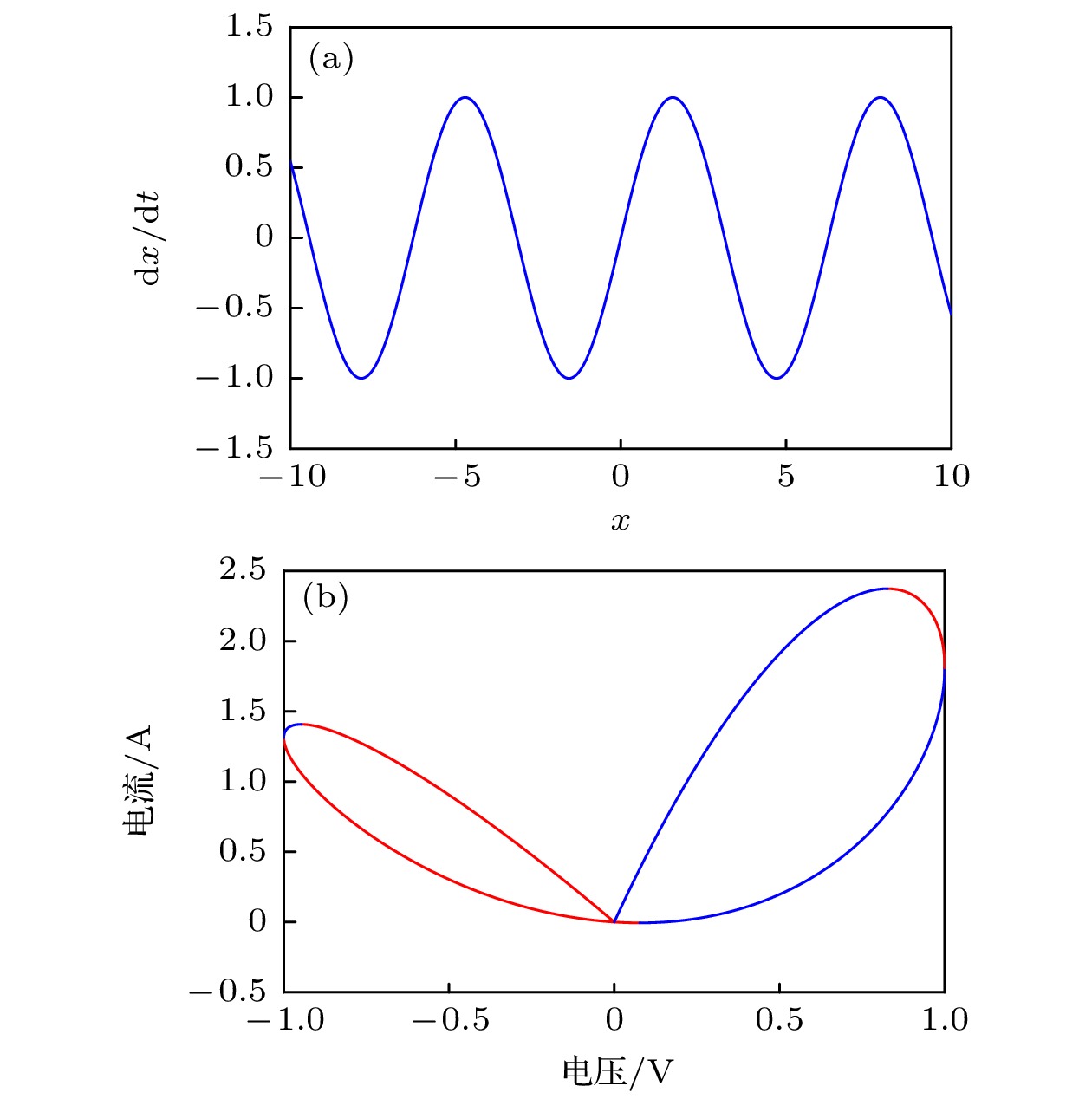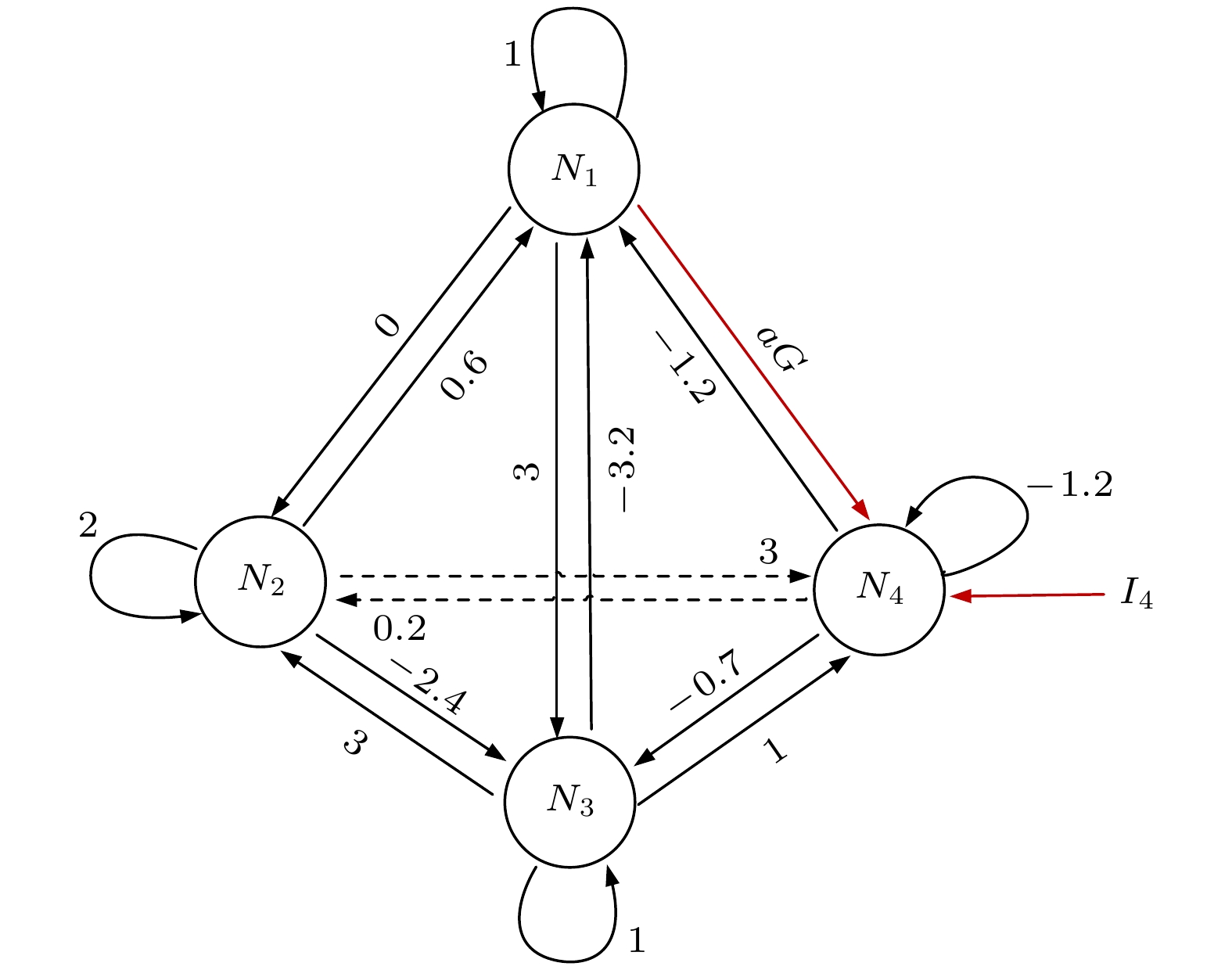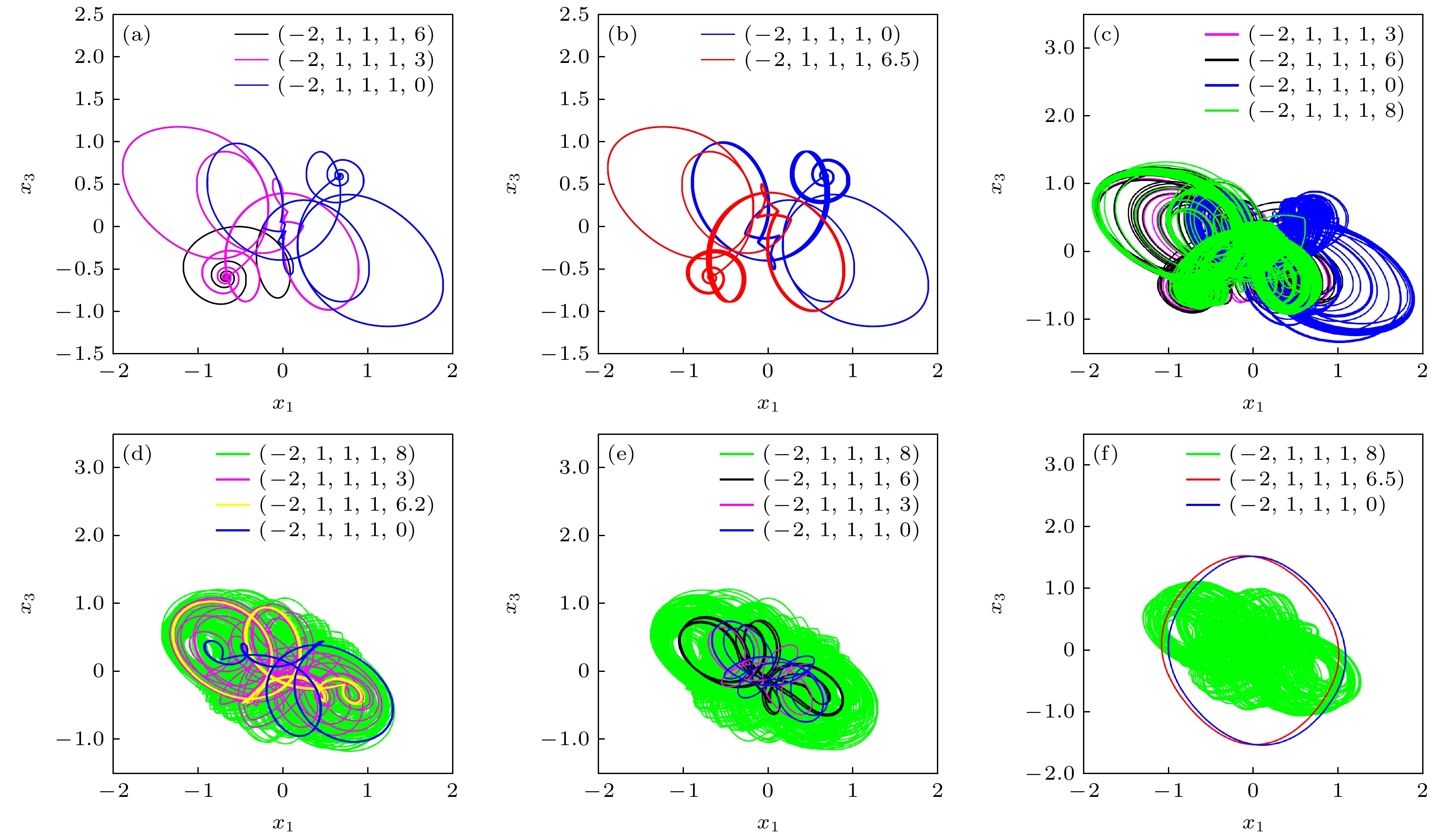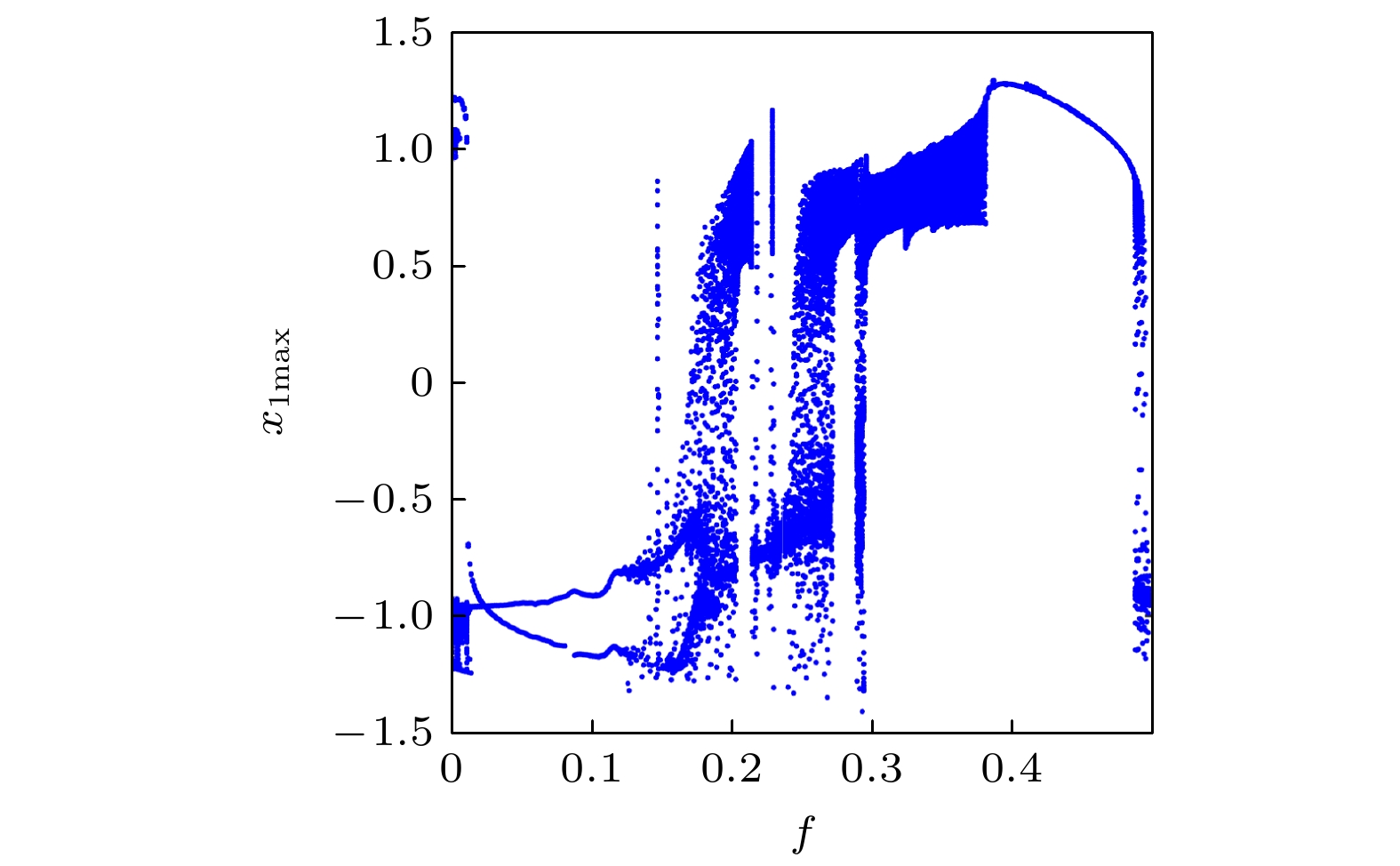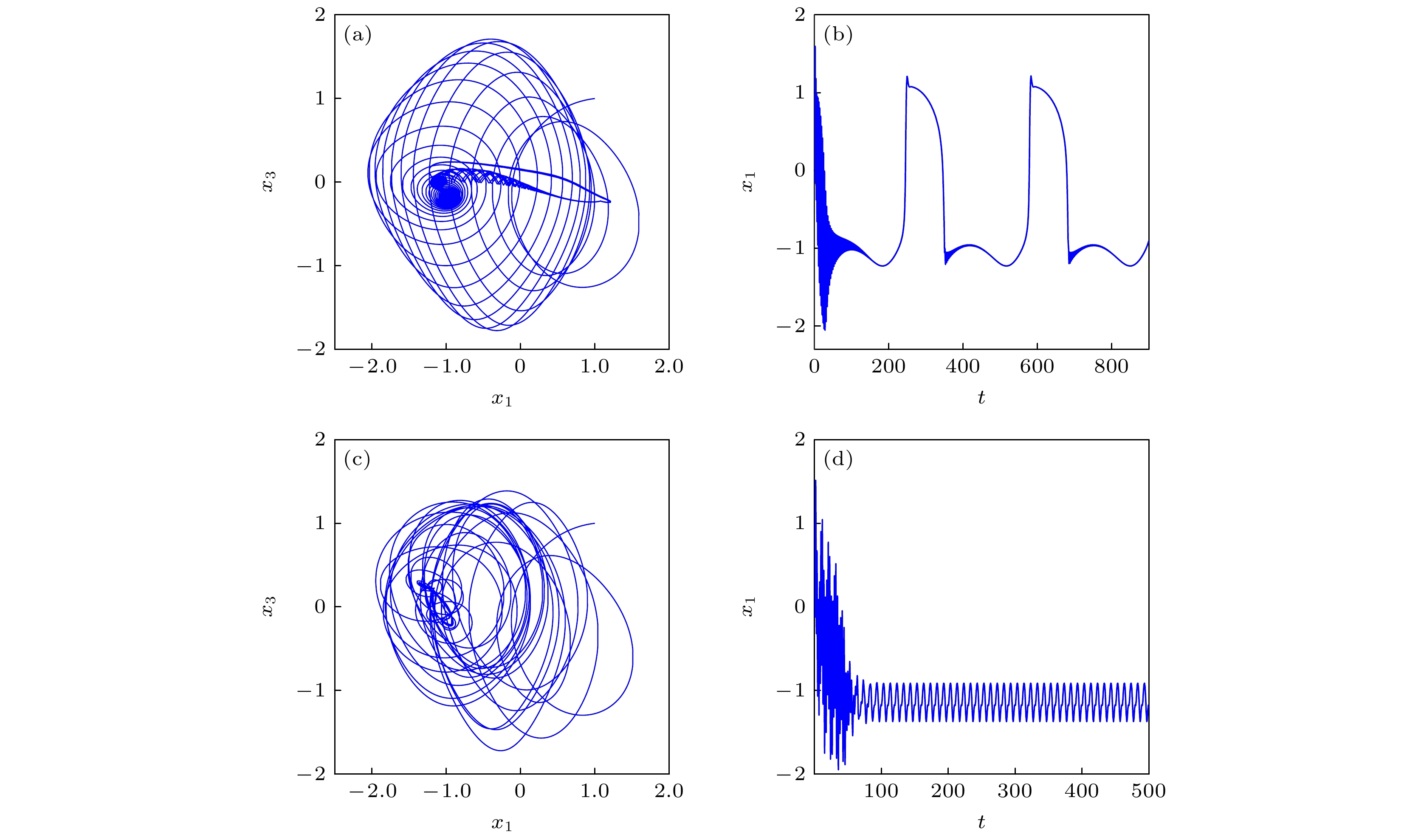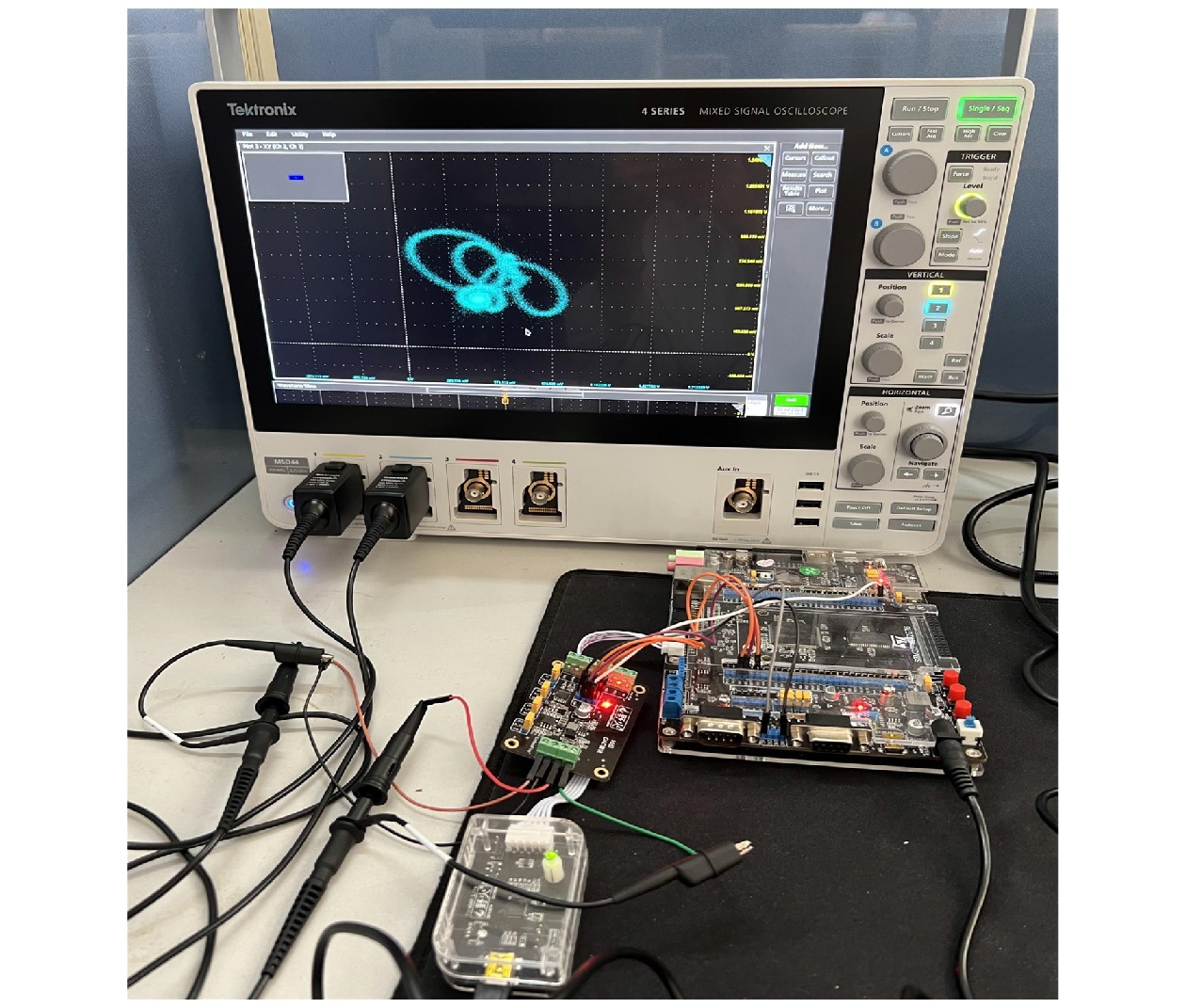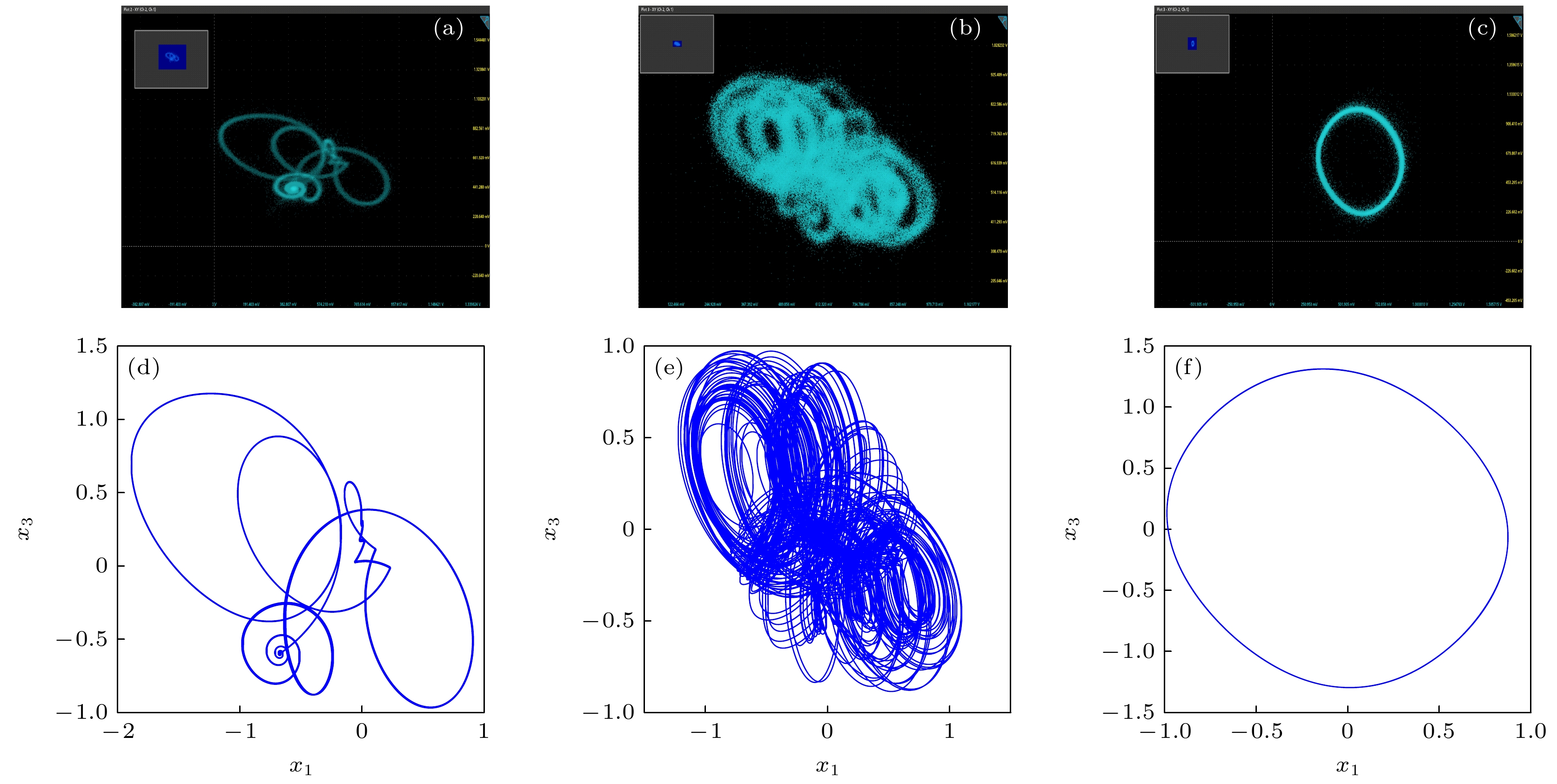-
The neural network model coupled with memristors has been extensively studied due to its ability to more accurately represent the complex dynamic characteristics of the biological nervous system. Currently, the mathematical model of memristor used to couple neural networks mainly focuses on primary function, absolute value function, hyperbolic tangent function, etc. To further enrich the memristor-coupled neural network model and take into account the motion law of particles in some doped semiconductors, a new compound exponential local active memristor is proposed and used as a coupling synapse in the Hopfield neural network. Using the basic dynamic analysis method, the system’s dynamic behaviors are studied under different parameters and the coexistence of multiple bifurcation modes under different initial values. In addition, the influence of frequency change of external stimulation current on the system is also studied. The experimental results show that the internal parameters of memristor synapses regulate the system, and the system has a rich dynamic behavior, including symmetric attractor coexistence, asymmetric attractor coexistence, large-scale chaos as shown in attached figure, and bursting oscillation. Finally, the hardware of the system is realized by the STM32 microcontroller, and the experimental results verify the realization of the system.
-
Keywords:
- locally active memristor /
- Hopfield neural network /
- multiple coexisting attractor /
- bursting oscillation
[1] Chua L 1971 IEEE Trans. Circuits Syst. I Regul. Pap. 18 507
 Google Scholar
Google Scholar
[2] Chua L 2014 Semicond. Sci. Technol. 29 104001
 Google Scholar
Google Scholar
[3] Wang M J, Deng Y, Liao X H, Li Z J, Ma M L, Zeng Y C 2019 Int. J. Non. Linear. Mech. 111 149
 Google Scholar
Google Scholar
[4] Peng Y X, Liu J, He S B, Sun K H 2023 Chaos, Solitons Fractals 171 113429
 Google Scholar
Google Scholar
[5] Wang M J, An M Y, He S B, Zhang X N, Iu H H, Li Z J 2023 Chaos 33 073129
 Google Scholar
Google Scholar
[6] Peng Y X, He S B, Sun K H 2022 Nonlinear Dyn. 107 1263
 Google Scholar
Google Scholar
[7] He S B, Liu J, Wang H H, Sun K H 2023 Neurocomputing (Amst. ) 523 1
 Google Scholar
Google Scholar
[8] 古亚娜, 梁燕, 王光义, 夏晨阳 2022 物理学报 71 110501
 Google Scholar
Google Scholar
Gu Y N, Liang Y, Wang G Y, Xia C Y 2022 Acta Phys. Sin. 71 110501
 Google Scholar
Google Scholar
[9] 武长春, 周莆钧, 王俊杰, 李国, 胡绍刚, 于奇, 刘洋 2022 物理学报 71 148401
 Google Scholar
Google Scholar
Wu C C, Zhou P J, Wang J J, Li G, Hu S G, Yu Q, Liu Y 2022 Acta Phys. Sin. 71 148401
 Google Scholar
Google Scholar
[10] Chua L 2013 Nanotechnology 24 383001
 Google Scholar
Google Scholar
[11] Lu Y C, Li H M, Li C L 2023 Neurocomputing (Amst. ) 544 126246
 Google Scholar
Google Scholar
[12] Li Z J, Chen K J 2023 Chaos, Solitons Fractals 175 114017
 Google Scholar
Google Scholar
[13] Hopfield J J 1984 Proc. Natl. Acad. Sci. U. S. A. 81 3088
 Google Scholar
Google Scholar
[14] Chen C J, Chen J Q, Bao H, Chen M, Bao B C 2019 Nonlinear Dyn. 95 3385
 Google Scholar
Google Scholar
[15] Lin H R, Wang C H, Hong Q H, Sun Y C 2020 IEEE Tran. Circuits Syst. II Express Briefs 67 3472
 Google Scholar
Google Scholar
[16] Chen C J, Min F H, Zhang Y Z, Bao B C 2021 Nonlinear Dyn. 106 2559
 Google Scholar
Google Scholar
[17] Li C L, Yang Y Y, Yang X B, Zi X Y, Xiao F L 2022 Nonlinear Dyn. 108 1697
 Google Scholar
Google Scholar
[18] Doubla I S, Ramakrishnan B, Njitacke Z T, Kengne J, Rajagopal K 2022 Int. J. Electron. Commun. 144 154059
 Google Scholar
Google Scholar
[19] 黄丽丽, 黄强, 黄振, 臧红岩, 雷腾飞 2023 电子元件与材料 42 10
 Google Scholar
Google Scholar
Huang L L, Huang Q, Huang Z, Zang H Y, Lei T F 2023 Electron. Compon. Mater. 42 10
 Google Scholar
Google Scholar
[20] Lin H R, Wang C H, Sun J R, Zhang X, Sun Y C, Iu H H C 2023 Chaos Solitons Fractals 166 112905
 Google Scholar
Google Scholar
[21] Wan Q Z, Chen S M, Yang Q, Liu J, Sun K L 2023 Nonlinear Dyn. 111 18505
 Google Scholar
Google Scholar
[22] Lin H R, Wang C H, Yu F, Sun J R, Du S C, Deng Z K, Deng Q L 2023 Mathematics (Basel) 11 1369
 Google Scholar
Google Scholar
[23] Panahi S, Aram Z, Jafari S, Ma J, Sprott J C 2017 Chaos, Solitons Fractals 105 150
 Google Scholar
Google Scholar
[24] Guevara M R, Glass L, Mackey M C, Shrier A 1983 IEEE Trans. Syst. Man Cybern. Syst. 5 790
 Google Scholar
Google Scholar
[25] Chua L 2018 Appl. Phys. A: Mater. 124 563
 Google Scholar
Google Scholar
[26] Chua L 2005 Int. J. Bifurcat. Chaos 15 3435
 Google Scholar
Google Scholar
[27] Ascoli A, Slesazeck S, Mähne H, Tetzlaff R, Mikolajick T 2015 IEEE Trans. Circuits Syst. I Regul. Pap. 62 1165
 Google Scholar
Google Scholar
[28] Chua L 2015 Radioengineering 24 319
 Google Scholar
Google Scholar
[29] Wang M J, Li J H, Yu S S, Zhang X N, Li Z J, Iu H H C 2020 Chaos 30 043125
 Google Scholar
Google Scholar
[30] Bi Q S, Gou J T 2023 Chaos Solitons Fractals 167 113046
 Google Scholar
Google Scholar
[31] 莱维坦 I B, 卡茨玛克 L K著 (舒斯云, 包新民 译) 2001 神经元: 细胞和分子生物学 (北京: 科学出版社) 第43—44页
Levitan I B, Kaczmarek L K (translated by Shu S Y, Bao X M) 2001 The Neuron: Cell and Molecular Biology (Beijing: Science Press) pp43–44
[32] Jokar E, Abolfathi H, Ahmadi A, Ahmadi M 2019 IEEE Trans. Circuits Syst. I Regul. Pap. 66 2336
 Google Scholar
Google Scholar
[33] Li K X, Bao H, Li H Z, Ma J, Hua Z Y, Bao B C 2021 IEEE Trans. Industr. Inform. 18 1726
 Google Scholar
Google Scholar
[34] Lin H R, Wang C H, Chen C J, Sun Y C, Zhou C, Xu C, Hong Q H 2021 IEEE Trans. Circuits Syst. I Regul. Pap. 68 3397
 Google Scholar
Google Scholar
-
图 1 G(x)与k1, m1, m2之间的关系图 (a) m1 = 3, m2 = –3时, k1与G(x)之间的关系图; (b) k1 = 1, m2 = –3时, m1与G(x)之间的关系图; (c) k1 = 1, m1 = 3时, m2与G(x)之间的关系图
Figure 1. Relationship between G(x) and k1, m1 and m2: (a) Relationship between k1 and G(x) when m1 = 3 and m2 = –3; (b) the relationship between m1 and G(x) when k1 = 1 and m2 = –3; (c) the relationship between m2 and G(x) when k1 = 1 and m1 = 3.
表 1 a = 2.5, m1 = 0.5, m2 = –3时, 系统平衡点处的特征值及稳定性
Table 1. Eigenvalue and stability at the equilibrium point of the system when a = 2.5, m1 = 0.5 and m2 = –3.
m1 k 特征值 稳定性 0.5 0 1, 1.0399, –3.7032, 0.7316±3.9891i 不稳定的鞍焦点 ±1 –1, 1.4681±2.5644i, –2.0681±40.1411i 不稳定的鞍焦点 ±2 1, 1.4833±2.5761i, –2.0833±927.5014i 不稳定的鞍焦点 ±3 –1, 1.4833±2.5761i, –2.0833±21462.9637i 不稳定的鞍焦点 -
[1] Chua L 1971 IEEE Trans. Circuits Syst. I Regul. Pap. 18 507
 Google Scholar
Google Scholar
[2] Chua L 2014 Semicond. Sci. Technol. 29 104001
 Google Scholar
Google Scholar
[3] Wang M J, Deng Y, Liao X H, Li Z J, Ma M L, Zeng Y C 2019 Int. J. Non. Linear. Mech. 111 149
 Google Scholar
Google Scholar
[4] Peng Y X, Liu J, He S B, Sun K H 2023 Chaos, Solitons Fractals 171 113429
 Google Scholar
Google Scholar
[5] Wang M J, An M Y, He S B, Zhang X N, Iu H H, Li Z J 2023 Chaos 33 073129
 Google Scholar
Google Scholar
[6] Peng Y X, He S B, Sun K H 2022 Nonlinear Dyn. 107 1263
 Google Scholar
Google Scholar
[7] He S B, Liu J, Wang H H, Sun K H 2023 Neurocomputing (Amst. ) 523 1
 Google Scholar
Google Scholar
[8] 古亚娜, 梁燕, 王光义, 夏晨阳 2022 物理学报 71 110501
 Google Scholar
Google Scholar
Gu Y N, Liang Y, Wang G Y, Xia C Y 2022 Acta Phys. Sin. 71 110501
 Google Scholar
Google Scholar
[9] 武长春, 周莆钧, 王俊杰, 李国, 胡绍刚, 于奇, 刘洋 2022 物理学报 71 148401
 Google Scholar
Google Scholar
Wu C C, Zhou P J, Wang J J, Li G, Hu S G, Yu Q, Liu Y 2022 Acta Phys. Sin. 71 148401
 Google Scholar
Google Scholar
[10] Chua L 2013 Nanotechnology 24 383001
 Google Scholar
Google Scholar
[11] Lu Y C, Li H M, Li C L 2023 Neurocomputing (Amst. ) 544 126246
 Google Scholar
Google Scholar
[12] Li Z J, Chen K J 2023 Chaos, Solitons Fractals 175 114017
 Google Scholar
Google Scholar
[13] Hopfield J J 1984 Proc. Natl. Acad. Sci. U. S. A. 81 3088
 Google Scholar
Google Scholar
[14] Chen C J, Chen J Q, Bao H, Chen M, Bao B C 2019 Nonlinear Dyn. 95 3385
 Google Scholar
Google Scholar
[15] Lin H R, Wang C H, Hong Q H, Sun Y C 2020 IEEE Tran. Circuits Syst. II Express Briefs 67 3472
 Google Scholar
Google Scholar
[16] Chen C J, Min F H, Zhang Y Z, Bao B C 2021 Nonlinear Dyn. 106 2559
 Google Scholar
Google Scholar
[17] Li C L, Yang Y Y, Yang X B, Zi X Y, Xiao F L 2022 Nonlinear Dyn. 108 1697
 Google Scholar
Google Scholar
[18] Doubla I S, Ramakrishnan B, Njitacke Z T, Kengne J, Rajagopal K 2022 Int. J. Electron. Commun. 144 154059
 Google Scholar
Google Scholar
[19] 黄丽丽, 黄强, 黄振, 臧红岩, 雷腾飞 2023 电子元件与材料 42 10
 Google Scholar
Google Scholar
Huang L L, Huang Q, Huang Z, Zang H Y, Lei T F 2023 Electron. Compon. Mater. 42 10
 Google Scholar
Google Scholar
[20] Lin H R, Wang C H, Sun J R, Zhang X, Sun Y C, Iu H H C 2023 Chaos Solitons Fractals 166 112905
 Google Scholar
Google Scholar
[21] Wan Q Z, Chen S M, Yang Q, Liu J, Sun K L 2023 Nonlinear Dyn. 111 18505
 Google Scholar
Google Scholar
[22] Lin H R, Wang C H, Yu F, Sun J R, Du S C, Deng Z K, Deng Q L 2023 Mathematics (Basel) 11 1369
 Google Scholar
Google Scholar
[23] Panahi S, Aram Z, Jafari S, Ma J, Sprott J C 2017 Chaos, Solitons Fractals 105 150
 Google Scholar
Google Scholar
[24] Guevara M R, Glass L, Mackey M C, Shrier A 1983 IEEE Trans. Syst. Man Cybern. Syst. 5 790
 Google Scholar
Google Scholar
[25] Chua L 2018 Appl. Phys. A: Mater. 124 563
 Google Scholar
Google Scholar
[26] Chua L 2005 Int. J. Bifurcat. Chaos 15 3435
 Google Scholar
Google Scholar
[27] Ascoli A, Slesazeck S, Mähne H, Tetzlaff R, Mikolajick T 2015 IEEE Trans. Circuits Syst. I Regul. Pap. 62 1165
 Google Scholar
Google Scholar
[28] Chua L 2015 Radioengineering 24 319
 Google Scholar
Google Scholar
[29] Wang M J, Li J H, Yu S S, Zhang X N, Li Z J, Iu H H C 2020 Chaos 30 043125
 Google Scholar
Google Scholar
[30] Bi Q S, Gou J T 2023 Chaos Solitons Fractals 167 113046
 Google Scholar
Google Scholar
[31] 莱维坦 I B, 卡茨玛克 L K著 (舒斯云, 包新民 译) 2001 神经元: 细胞和分子生物学 (北京: 科学出版社) 第43—44页
Levitan I B, Kaczmarek L K (translated by Shu S Y, Bao X M) 2001 The Neuron: Cell and Molecular Biology (Beijing: Science Press) pp43–44
[32] Jokar E, Abolfathi H, Ahmadi A, Ahmadi M 2019 IEEE Trans. Circuits Syst. I Regul. Pap. 66 2336
 Google Scholar
Google Scholar
[33] Li K X, Bao H, Li H Z, Ma J, Hua Z Y, Bao B C 2021 IEEE Trans. Industr. Inform. 18 1726
 Google Scholar
Google Scholar
[34] Lin H R, Wang C H, Chen C J, Sun Y C, Zhou C, Xu C, Hong Q H 2021 IEEE Trans. Circuits Syst. I Regul. Pap. 68 3397
 Google Scholar
Google Scholar
Catalog
Metrics
- Abstract views: 4618
- PDF Downloads: 116
- Cited By: 0
















 DownLoad:
DownLoad:

